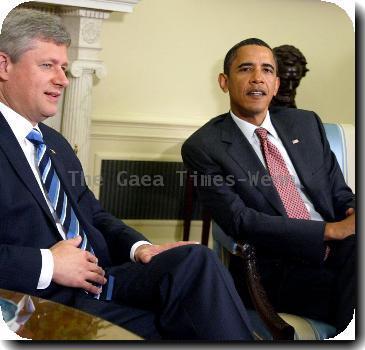Senate panel extends life of space shuttle, compromises with Obama on NASA’s future
By APThursday, July 15, 2010
Senate panel sets NASA on course to asteroids
WASHINGTON — President Barack Obama’s plan to redirect U.S. astronauts to near-Earth asteroids and eventually to Mars received a boost Thursday from a Senate panel that also agreed to extend the life of the space shuttle program for a year.
The Senate Commerce Committee unanimously approved a three-year spending plan for NASA that represented a compromise between Obama’s efforts to change course from the Bush administration’s goal of returning astronauts to the moon and congressional concerns that the president’s blueprint would undermine NASA’s role in space exploration and result in job losses.
The panel agreed that the space agency should move more quickly to develop and operate a heavy-lift rocket. Obama’s plan relies on commercial space development in the near future and puts off an immediate decision on a future heavy-lift rocket program that would carry astronauts to asteroids and beyond.
“The goal was to preserve U.S. leadership in space exploration and keep as much of the rocket industry talent as possible employed,” said Sen. Bill Nelson, D-Fla.
Sen. Kay Bailey Hutchison of Texas, the top Republican on the committee and an earlier critic of the commercialization of the space program, said the legislation “represents a strong balance between the need for investment in new technology and the continued evolution of the commercial market to take an increasing role in supporting our efforts in low-Earth orbit.”
The measure must next be considered by the full Senate and be incorporated in annual spending bills.
The compromise came after several icons of the space program, including Neil Armstrong, the first man to walk on the moon, blasted the Obama plan, saying it was a mistake to rely on the private sector to provide spacecraft in a timely fashion.
The plan would extend the space shuttle program, scheduled for termination, for at least another year, authorizing an additional mission to the International Space Station. It extends the International Space Station to at least 2020.
It maintains the $19 billion total funding for NASA in the 2011 fiscal year beginning Oct. 1. It provides an average of $1 billion a year over the next six years to promote commercial space development, compared with the White House’s original request for $1.2 billion a year over five years.
White House spokesman Nick Shapiro said the deal worked out with the senators “contains the critical elements necessary for achieving the president’s vision for NASA.”
Obama told NASA workers at Cape Canaveral, Fla., in April that he was committed to manned space flight and foresaw sending astronauts to an asteroid and onward to Mars in the coming decades.
Associated Press writer Jim Abrams contributed to this report.
Tags: Asteroids, Astronomy, Barack Obama, North America, United States, Washington


